What if I told you that the world of Mexican handcrafts and folk art is brimming with secrets that can transform your understanding of cultural treasures? This vibrant realm isn't just colorful—it’s revolutionary.
In an era where preserving heritage feels more vital than ever, exploring the depths of Mexican craftsmanship is a gateway to a world enriched with history, identity, and astonishing artistry that's about to be a global sensation.
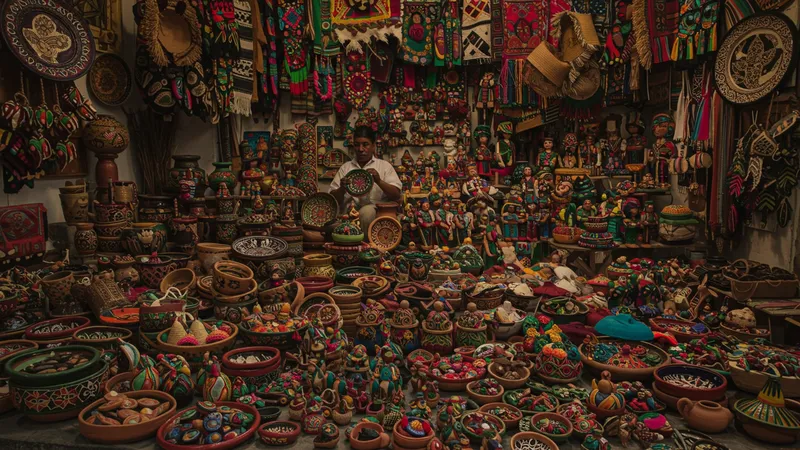
Did you know some traditional Mexican crafts are so meticulously mastered that they're deemed 'intangible cultural heritage' by UNESCO? It’s a place where weaving on ancient looms produces textiles that tell stories passed down through generations. But that’s not even the wildest part…
Many crafts like Talavera pottery, with its bold patterns and colors, carry a hidden legacy dating back to the colonial era, entwined with Spanish and indigenous influences. Yet, there's an unexpected twist to these cultural icons that few are aware of, until now…
What happens next shocked even the experts, challenging everything we thought we knew about cultural preservation and artisan economies. Prepare yourself because you've just embarked on a quest to uncover truths that will make you view Mexican art like never before.
In a world rapidly losing touch with sustainable practices, the Mexican handcraft industry stands out as a beacon of hope. Craftsmen and women have been utilizing sustainable techniques for centuries, employing natural dyes and sustainable fibers long before 'eco-friendly' became a buzzword. This wasn’t merely for trend—this was tradition. The people behind these crafts possess a deep respect for Earth and its resources, which reflects in their work. It's a practice rooted in necessity and respect, not just style.
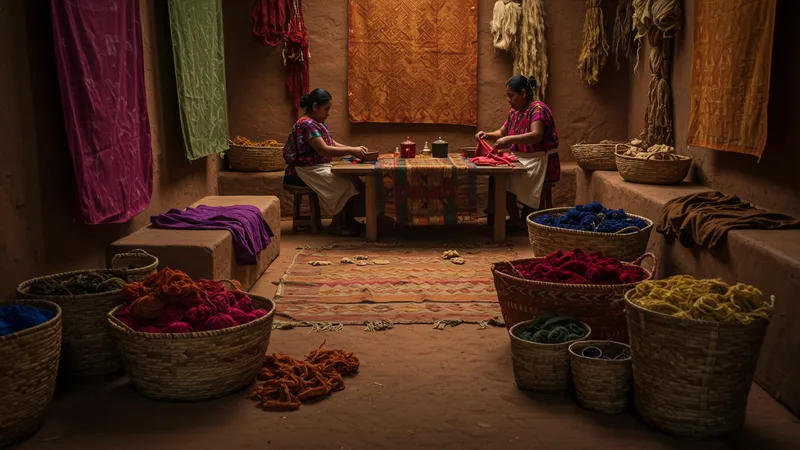
This movement is gaining traction on a global scale, influencing fashion and home decor lines across continents. Designers from Paris to New York are integrating these eco-friendly techniques derived from Mexican artisans into their seasonal collections. This is slowly shifting consumer perception, bringing authenticity to a world of fast fashion and mass production. But while the appeal of sustainability hits high notes, there's more beneath the surface...
The quiet revolution is happening as tourists and locals alike are starting to seek out authentic experiences over mass-produced replicas. They travel to small villages and cities like Oaxaca and San Miguel de Allende, engaging directly with artisans, which not only keeps traditions alive but allows for an organic exchange of culture and ideas. However, this is just the start of an intricate tapestry we're only beginning to unravel.
With climate change concerns continuing to soar, more sectors are looking towards these traditional methods as blueprints for the future. What's more, some of these crafts are now entering tech fields in the most unexpected ways. The innovation and tech community might be peering over the shoulders of these artisans for inspiration. Tourists leave with more than souvenirs; they return with a new lens on what it means to live sustainably. But there’s one more twist you didn’t see coming...
In the intricate tapestry of Mexican folk art, the role of women often goes underappreciated, yet they are the heartbeat of many artistic traditions. From embroidery that speaks silent stories of community to pottery, where the feel of clay becomes an extension of their voices, the handwork of women is irreplaceable. Over generations, skills are meticulously passed down from mother to daughter, ensuring the survival of their craft and culture.
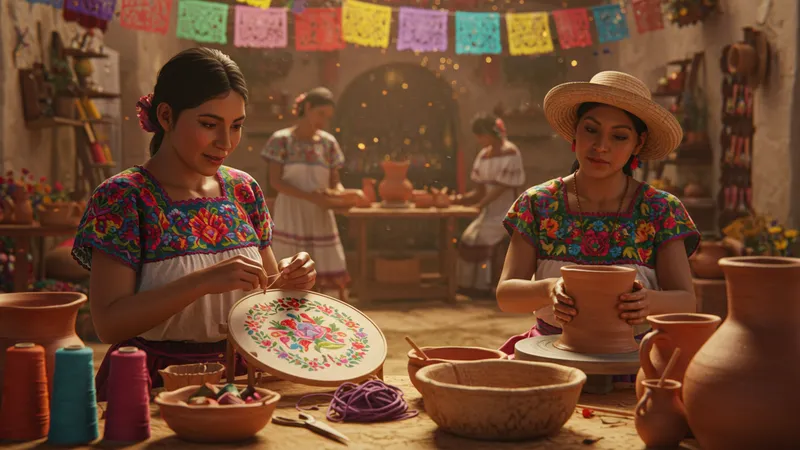
Women artisans are often the preserve of entire artistic lineages; they are the choreographers of vibrant festivals and keepers of oral traditions. This role empowers them economically and socially within communities. But it doesn’t stop there. Their influence is beginning to ripple beyond borders, finding its way into international art galleries and cultural institutions. Women in this sphere are harvested for collaborations that enchant the senses, but there’s yet more to the narrative...
The burgeoning demand for these crafts has seen initiatives springing up, creating co-ops and networks that not only better the lives of these artisans but also flip the script on production and artisan commerce. This interconnectedness offers women empowerment, providing them with financial control, enhanced social status, and a platform for their voices. These artistry avenues form a web that connects isolated villages to bustling metropolitan hearts, a connection that constantly evolves.
Despite the spotlight slowly turning towards them, there's a cherished cultural ethos that remains concealed. The method of storytelling through art, designed by women, crafts an alternative narrative to the ones often churned out by male-centered industries. Consider what might happen if these stories were elevated, bringing insight to power structures across industries. These developments might just stir change that extends far beyond the borderlines. What you read next might change how you see this forever.
Beyond plastic replicas and tourist trinkets lies a rich tradition of indigenous handcraft techniques. While mass production and technology have flooded the global market, these ancient methods remain imbued with meaning and spirit. What many don't realize is how deeply these techniques influence contemporary design, spinning threads of heritage into modern fashion and home decor narratives.
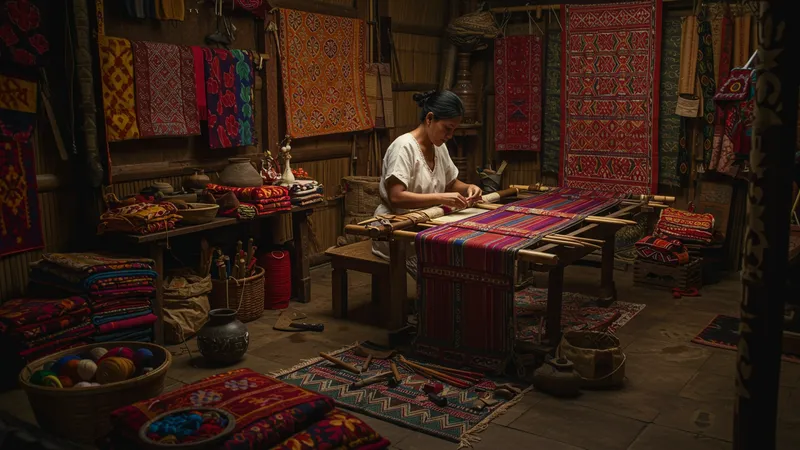
Meticulous hand-weaving and natural dyeing processes, once seen as lost skills, are being revived and revered in international design circles. These techniques form a seamless bridge between the old and the new, creating a narrative often unseen by the casual observer. But here's the clincher—these indigenous crafts fuel cultural revivals that defy corporate conglomerates by emphasizing individuality and heritage.
Collaborations between indigenous artists and renowned global designers are reintroducing these time-honored practices to a new audience. People the world over, from Milan to Tokyo, are starting to wear garments and adorn homes with furniture fashioned by techniques passed down through centuries. But this is not just a trend; it mirrors a desire for authenticity and connection in a homogenized world. The aroma of heritage is wafting back into mainstream culture with every silken thread and clay pot.
Often sublimated under layers of colonial history, revealing these intricate processes unearths a cultural renaissance with far-reaching effects. Industries across the board are taking note, seeking ways to employ these traditional methods as part of their future strategies. Could it be possible that indigenous techniques offer hidden keys to sustainable and ethical business practices of the future? Prepare for revelations that could indeed reshape industries writ large.
The earth is transformed into chronicles through Mexican pottery, each piece carrying stories of the land and its people. The practice of creating pottery is an ancient tradition, spanning thousands of years, with roots that dig deep into pre-Columbian times. But what remains a mystery to many is how these artisanal works offer a reflection into the very anthropology of humanity, transcending the boundaries of mere craft.
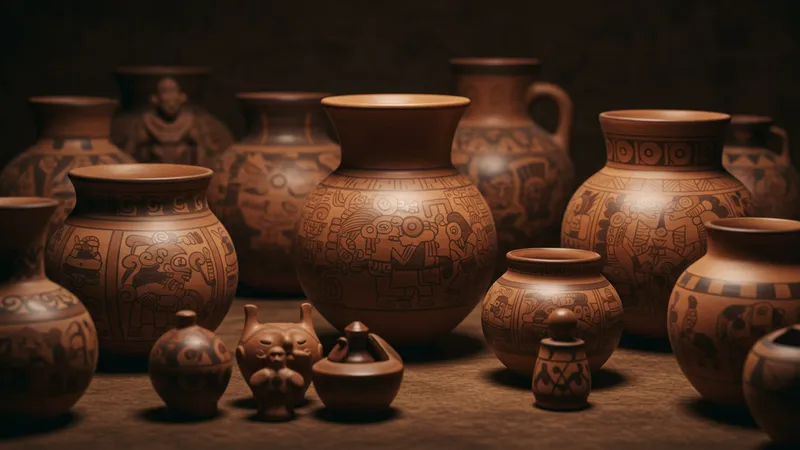
Figurines and vessels often depicted are filled with complex symbols and narratives depicting everyday life and cosmic mythologies. What collectors and admirers might not always grasp is the spiritual bond these potters share with their craft. These are not just inert objects; they are living narrators, encapsulating legends in clay. Even skeptics are intrigued as they delve into these narratives that stretch beyond visuals.
The refinement seen in many techniques today can be attributed to the fusion of indigenous methods passed along generations and innovations introduced during Spanish colonization. It’s a symphony of cultural exchange where each piece hums with the whispers of ancient artists and contemporary virtuosos alike. And here’s where the thrill lies—the ongoing narrative as potters evolve traditions to reflect modern realities.
With increasing globalization, these ceramic stories are now part of museum showcases and private collections worldwide, bringing the history and innovation of Mexican potters to the forefront. Yet, with all the attention, many potteries still remain hidden gems to discover, offering untold stories waiting to be unraveled. Imagine the untapped galleries still lying under the soil, waiting to reveal artifacts that challenge known history. Stay tuned, as forging connections with them might reveal truths that ripple into countless spheres.
Few realize just how much the vibrant colors and patterns in Mexican handwoven textiles owe to ancient traditions that defy obsolescence. Centuries-old methods are still in use today, echoing the techniques and stories handed down through countless generations. The meaning stitched into each piece of fabric isn’t just ornamental; it’s an enduring testament to cultural identity.
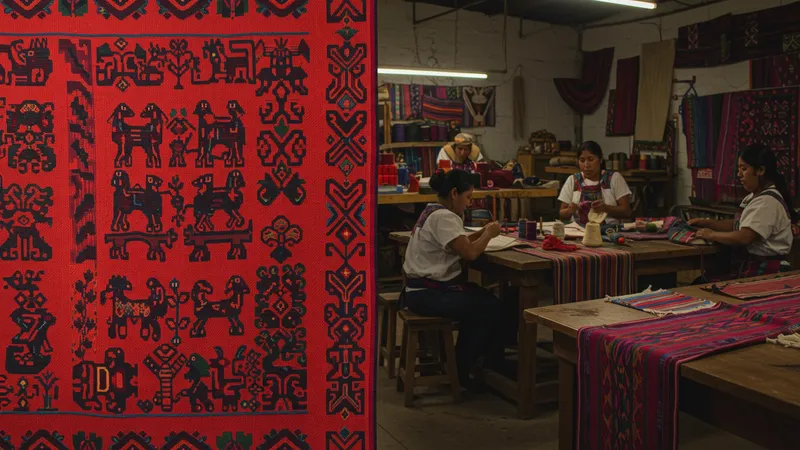
The intricate designs and bold colors reflect millennia of influences, each weave telling stories of community, ritual, and survival. With increased attention towards preserving these delicate crafts, there's an unexpected twist—cooperatives led by indigenous groups are now breaking barriers by melding these historic methods with modern business practices, revolutionizing the industry from within.
This newfound synergy between ancient and modern is spawning unique products that capture a global market. The sale of their textiles supports entire communities, playing a significant role in their economic structure and cultural preservation. Artisans have found innovative ways to preserve these traditions, inviting a younger generation to appreciate and take pride in their heritage.
On a broader scale, the revitalization of traditional textiles represents a kind of cultural resurgence amid a world dominated by fleeting fashion trends. And here’s something you might not have seen coming—the impact of these textiles is being felt as far afield as technology, where the symbiotic relationship between material and craftsmanship is beginning to inspire things as varied as modern architecture and digital design frameworks. The next revelation might just thread a connection with continents away.
Colorful, whimsical, and utterly captivating, alebrijes have taken the world by storm. These carved wooden creatures manifest fantastical beings from dreams and magic, a testament to the boundless imagination of their creators. Born from the mind of a Mexican artisan in the 1930s, alebrijes have grown from simple folk crafts to intricate representations celebrated globally.
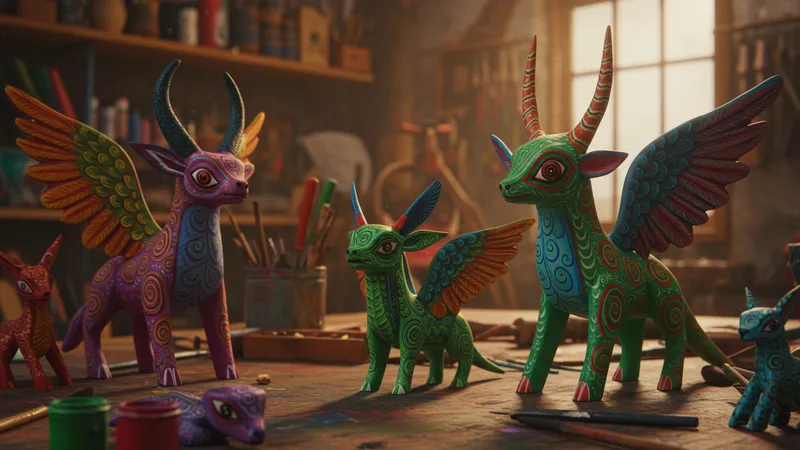
These creatures are a marvel of creativity, each possessing unique stories with metaphoric interpretations of good and evil, passion and fear, often reflecting their creator's inner journey. But the real magic lies in the technique passed from artist to artist, a dance of colors and forms that defies the ordinary, and now recognized as an expression of cultural narrative.
In recent years, local festivals and museums have brought these figments of imagination into the spotlight. They've become emblems of Mexican artistry, inviting viewers to dream and explore the farthest reaches of artistry. Once mere roadside curiosities, alebrijes are now prominent in galleries and exhibitions worldwide, kindling creativity and curiosity.
More than colorful companions, they symbolize a resurgence in cultural pride and artistic innovation that challenges conventional norms. Imagine these mythical creatures in multimedia applications or even as key design inspirations in architectural spaces. As bizarre as it sounds, the creative ripple effect spawned by alebrijes knows no bounds, transcending the cultural to potentially influence entirely new artistic spaces. Such enchantment redefines expectations of art and imagination, and the next page delves even deeper into the realm of these fascinating beings.
For many Mexicans, handcrafts go beyond mere artistry—they serve as tangible expressions of cultural identity and heritage. Each craft tells a story, each brushstroke is a reflection of ancestry, and each fiber intertwined represents a thread in a sprawling cultural tapestry. But what many outsiders don’t realize is the political and social statements these crafts embody.
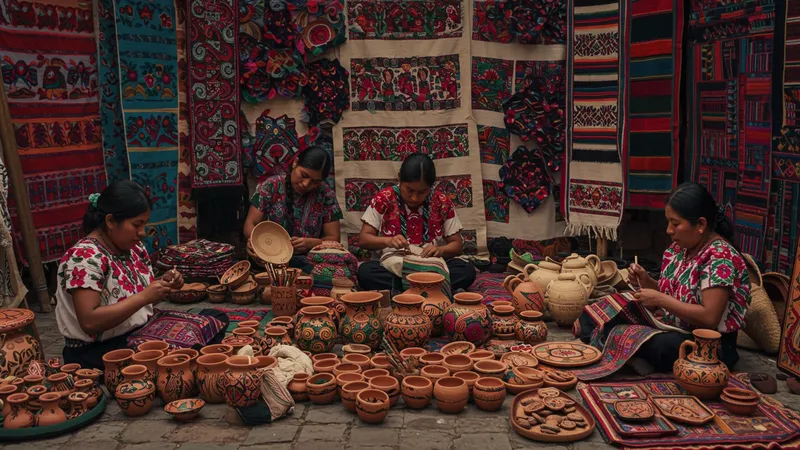
Handcrafts speak of resilience and resistance in the face of modernization pressures that challenge indigenous ways. They stand as defiant emblems, celebrating the intricate complexity of Mexican identity. Yet, these crafts also unify a nation by weaving intra-cultural appreciation and understanding. Each piece becomes an ambassador of heritage, speaking on behalf of those who came before.
The power of Mexican crafts as cultural patrimony should not be understated. They have become symbols of national pride and unity across varying demographics. With growing movements toward appreciating cultural patrimony, there has been a resurgence in their demand, symbolizing both a return to roots and a step forward in cultural cohesion.
As technology accelerates the pace of cultural exchange, Mexican handcrafts are seen as crucial in grounding identity amid global homogenization. But here's a twist—what if modern tech tools help preserve and propel these traditions further? There’s a paradox here where technology becomes both protector and catalyst, preserving heritage while inviting global dialogue. Next, we'll unravel unexplored implications of this digital-age convergence.
In communities where traditional handcraft production is the mainstay, these skills aren't just artistic pursuits—they're the keys to unlocking educational opportunities for the younger generation. The sale of folk art and crafts not only supports families economically but also funds educational initiatives, making for profound social implications.
Artisans investing their earnings into local schools and scholarship plans isn't just aspirational—it's building the foundations for future generations to thrive. Craft-making as a revenue stream allows for reinvestment into local educational infrastructures, setting a precedent for sustainable development driven by cultural heritage.
The narrative here becomes one not just of preservation but education’s empowerment. As students learn the importance of their heritage through these crafts, their self-perception shifts, embracing a sense of identity and responsibility toward their culture and future. This educational upliftment becomes a stepping stone to wider societal benefits.
But wait—there’s more to unpack! Technology and organization are driving new methodologies of education delivery. Online platforms now showcase these crafts, and the revenues generated digitize learning experiences even in the most remote villages. The evolving symbiosis showcases an inspiring glimpse into how traditional skills can be leveraged to catalyze educational evolution. Up next, discover how else these crafts could revolutionize global educational landscapes.
The mosaic of Mexico's cultural heritage depends significantly on preserving the artistry conveyed through handcrafts. Advocacy groups, government programs, and individual enthusiasts are playing vital roles in making sure these precious traditions do not fade into obscurity. Such efforts, however, carry a sense of urgency, mainly because of ever-encroaching modernity and globalization.
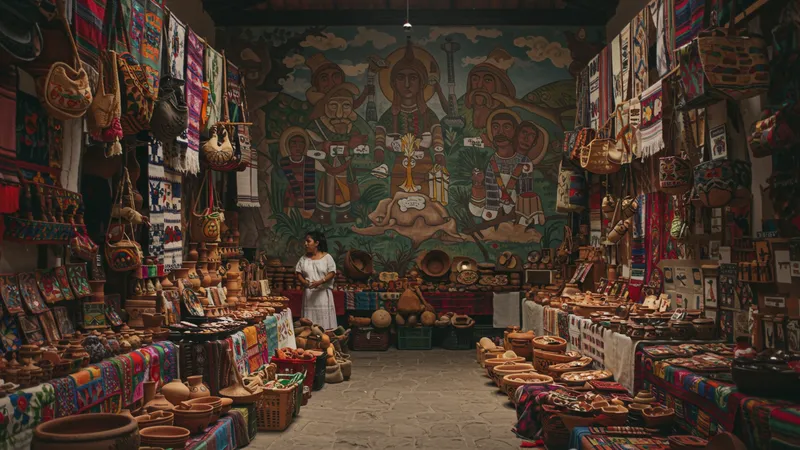
Programmes exist to safeguard traditions with initiatives like designating certain crafts as intangible cultural heritage and supporting community workshops. These concerted efforts are broadening the understanding and appreciation of these crafts. They focus on the importance of cherishing and retaining the diversity these art forms bring to the global cultural landscape.
These preservation activities extend beyond recognition, fostering economic opportunities, and encouraging sustainable practices among the artist communities. But the impact doesn't end there. International collaborations ensure a transnational dialogue that emphasizes the value of these crafts globally. Communities are discovering unprecedented pathways for crafts to flourish while preserving their essence.
Yet, with evolving challenges, the wits and determination of these communities hold a crucial question—could finding innovative methods to preserve crafts strike a balance with technological advancement, securing a place for these age-old techniques in our future? Allow this thought to dwell, as the pages that follow will unravel potential bridges between the past's richness and the demands of tomorrow’s world.
Festivals in Mexico serve as lively showcases for the exceptionally skilled artisans who keep the nation’s craft traditions alive. Cities like Oaxaca and Jalisco transform into bustling hubs of cultural exchange during these vibrant events. However, these festivals are more than just tourist attractions; they're cultural ceremonies that bring a modern audience closer to ancient practices.

Each festival offers a spectacular display of crafts ranging from weaving and embroidery to pottery and beyond. Artisans are celebrated as cultural ambassadors, sharing expertise and passion with an eager and engaged audience. The interaction between the craftspeople and visitors cultivates an appreciation while solidifying folk art's significance as part of a living, breathing culture.
While these festivals proudly parade traditions, they are also fertile grounds for innovation. Artists often experiment with colors, materials, and forms, pushing boundaries while celebrating heritage. It's a shared experience that enhances cultural connectivity and boosts interest in Mexican art on a global scale.
A twist in this narrative reveals how the power of these festivals extends beyond national pride. By showcasing a convergence of traditional and experimental, these assemblages invite cross-border creative collaboration and inspiration. Waiting for us just beyond the horizon is a landscape where cultural festivals bridge global creative communities. As you continue, explore the potential of these connections, transcending traditional boundaries and politics.
Mexican handcrafts and folk art have had, and continue to have, a profound impact far beyond the nation’s borders. Their influence is felt in various global industries, from fashion and interior design to sustainable commerce and cultural diplomacy. However, the true scale of this influence often remains untapped or underappreciated.
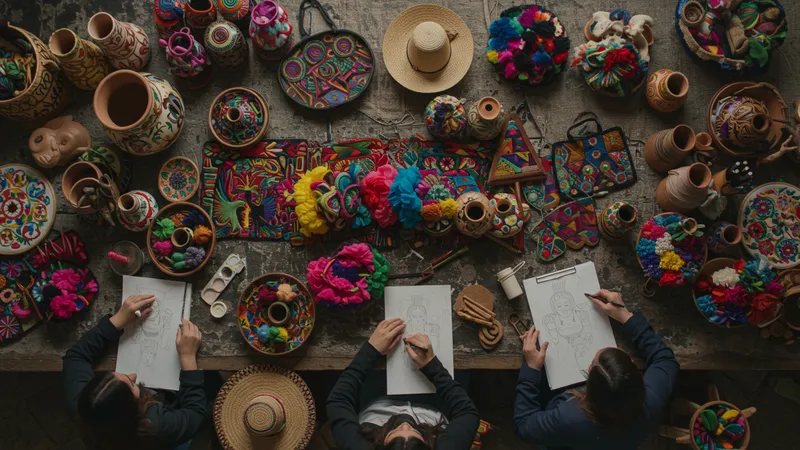
The fascination with these engaging art forms hints at their intrinsic blend of spirituality, aesthetics, and functionality, offering fresh perspectives to creative thinkers worldwide. From ethical fashion brands to high-end designers, everyone is looking towards these cultural artifacts for inspiration. This isn’t just about visual delight; entire philosophies are being shaped by these traditional movements.
Cross-cultural collaborations are sparking new incarnations of this artistry in globally recognized institutions. Museums, in particular, are becoming stewards of cultural preservation and advocates of diversity, channeling these crafts into broader narratives that resonate with international audiences. Yet, the interplay of influence flows both ways, bringing a deeper sense of unity and appreciation across diverse cultures.
The conversation around art and handcraft in Mexico is also about breaking cultural silos and inviting dialogue. The next chapters in this journey could provide the key to a new kind of cultural prosperity, driving both local and global narratives forward. Imagine an intersection where appreciation turns into allyship, sparking a new global renaissance. The following pages provide a pathway into this innovative frontier yet to be fully realized.
Mexican crafts have long been a medium for storytelling, expressing narratives that words sometimes fail to capture. Each piece of art, whether tangible or ephemeral, becomes an evocative statement about identity, struggles, triumphs, and dreams. Suddenly, art transforms spaces into vibrant stages where silenced histories and fresh hopes are enacted.
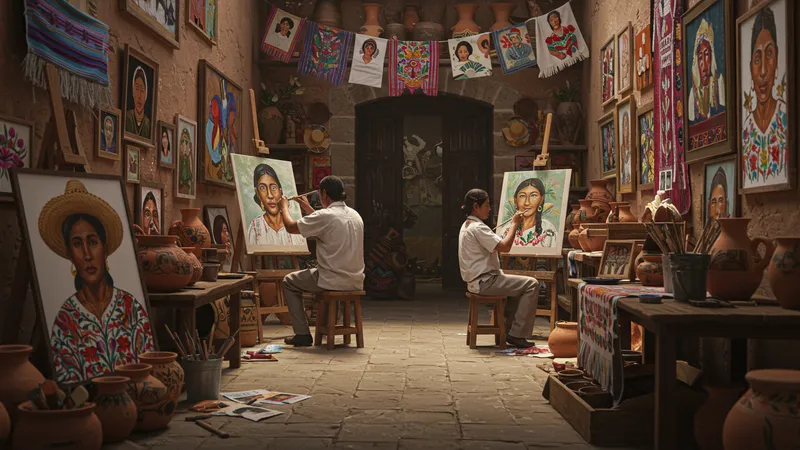
It's in the nuanced brushstroke of a portrait, the twist of a ceramic pot, or the hues of a handcrafted fabric—the depth of Mexican artistry is revealing its power as an instrument of social change. Not simply aesthetic expressions, these crafts encapsulate transformative storytelling that joins past narratives with contemporary discourse, addressing racial, gender, and class realities.
Artists across Mexico are harnessing this power, weaving new stories into global conversations that resonate on a personal and collective level. It’s a journey that aspires to create a more inclusive and empathetic world, uncovering oft-ignored perspectives and historical truth. The genre-defying nature of Mexican handcraft represents more than just tangible form; it is storytelling that transcends cultural and linguistic barriers.
Anticipate new forms of collaboration where the authority of Mexican artists rises on the global stage. Storytelling will transcend canvases to influence not just the art world but politics, education, and societal norms. Beyond the borders, onto new vistas—as we inch forward, these resonating voices promise to leave an indelible impact on future generations and how history will be told. Next, open the door to unimagined opportunities for creativity and connection.
The horizon of Mexican handcrafts and folk art is painted with promise. Traditional crafts are juxtaposing with innovations, where artisans hack new techniques, marry them with age-old practices, and birth creations that speak to both present times and ancient wisdom. But perhaps the most exciting prospect is the conception of a future where art assumes a more integrated role in various cultural spheres.
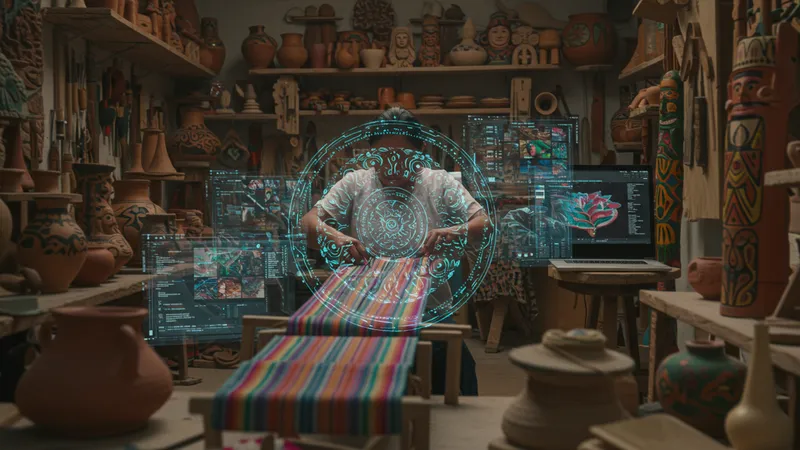
Visionaries see these crafts entering media, technology, and education sectors in unprecedented ways—a future where cross-pollination with the digital realm doesn't obliterate tradition but rather enhances its appeal. Imaginings include virtual reality bringing people face to face with artisans from every corner of Mexico, fostering empathy and global understanding.
Though challenges remain in securing equitable opportunities for these crafts to thrive in a globalized marketplace, there’s optimism rising. Organizations and initiatives are cropping up, focusing on sustainability, fair trade, and cultural exchange. Such frameworks lay a foundation for a burgeoning ecosystem that sustains these vibrant traditions while adapting to modern needs.
Embrace this and glimpse what’s at stake—an art form as a torchbearer of cultural continuity and merchandise to be shared rather than commodified. As these traditions merge more confidently with future-focused outlooks, we may discover that the humble craft harbors the potential to transform global engagement, education, and innovation profoundly. Prepare as the curtain rises on this promising new act in the world of Mexican handcrafts.
From the secrets of ancient weavers to the future-bound aspirations of modern artisans, the journey of Mexican handcrafts is a captivating testament to culture’s enduring vitality. These artistic treasures are evolving yet staying rooted, a dynamic dance that speaks of resilience, identity, and limitless possibility. As we collectively embrace these crafts, let us remember the rich narratives they carry and the bright future they promise.
The saga of Mexican folk art is far from over. Share this article with others, ignite curiosity, and inspire a newfound appreciation for the artistry that defines a nation. By doing so, you not only cherish the past but participate in shaping a more vibrant tomorrow. Let us embrace the power of storytelling through craft, stitching together a world more beautifully interconnected.